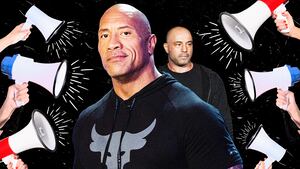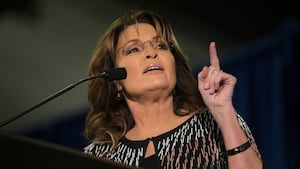Hello affirmative action, my old friend. It’s time to talk about you again.
In the Fall of 1984 as a high school senior in Central California, I had to write a 10-page paper on any topic for my American Government course. I chose to write about affirmative action in college admissions. The paper stretched 20 pages long.
As a Mexican-American applying to highly selective universities, I was carrying five advanced placement classes with a 4.0 GPA. I did five hours of homework every night, and I would eventually graduate with 96 A’s and 22 A+’s on my high school transcript. Still, classmates with lower grades informed me that if I got accepted to an Ivy League school, it would only be because I was “Mexican.”
I got accepted to three Ivies, including Harvard. That’s where I earned my degree. At 25, I wrote my memoir. The first chapter was titled: “If You Hadn’t Been Mexican.”
My friends were wrong. I was not a beneficiary of affirmative action. Harvard claims that it rewards excellence, and that’s what I delivered. Conservatives insist I took the spot of a more well-deserving white kid, while liberals expect me to spend my life on bended knee out of gratitude for all they gave me. I reject what both camps are peddling.
But today, I also reject affirmative action. The concept has been in existence for more than 60 years. It almost certainly served a purpose for the first half of its existence—from 1961 to 1991. But, over the last 30 years, it has done its intended beneficiaries more harm than good by lowering academic standards, stigmatizing recipients, and masking severe inequalities at the K-12 level between white students and students of color.
Now, affirmative action is once again the talk of the nation.
The Supreme Court has said that it will soon hear two cases—Students for Fair Admissions v. President and Fellows of Harvard College; and Students for Fair Admissions v. University of North Carolina—that could spell the end for affirmative action in college and university admissions.
In the 2003 case Grutter v. Bollinger, the Supreme Court held that the social benefits of a diverse student body justified letting universities take applicants’ race into account—with guidelines. It’s Grutter that the plaintiffs in the Harvard and UNC cases aim to overturn.
In the landmark 1978 affirmative action case, Regents of the University of California v. Bakke, SCOTUS split the baby. It found that outright racial or ethnic quotas for applicants were unlawful, while also permitting colleges and universities to take race and ethnicity into account as long as it was just one factor among several.
When Bakke was decided, I was just 11 years old. But my father was 37, and a third of the way into a law enforcement career that would last more than three decades.
My dad had always dreamed of being a police officer despite the fact that, for Mexican-Americans growing up in the 1940s, this concept wasn’t much more fanciful than becoming an astronaut. By the 1970s, he was on his way toward living that dream. And following a stint in the U.S. Army, he went to night school and earned his bachelor’s degree, helping him get promoted to police sergeant.
He continued to climb the ladder, and he’d be the first to admit that affirmative action helped him get hired at other law enforcement agencies. That makes sense. Police departments aren’t the most progressive institutions. They sometimes need a nudge.
My parents’ generation suffered real and overt discrimination, and so it made sense for affirmative action to give them a leg up. But it makes less sense to transfer that privilege to my children, who were raised in a wealthy suburb by parents with master’s degrees.
In a July 2021 Gallup poll, roughly 62 percent of Americans supported affirmative action programs for people of color. But according to the analytics firm that conducted the poll, respondents might have been thinking about affirmative action in employment. When asked about college admissions, public support typically drops, as many Americans see alleged “reverse discrimination” against white people—and, more recently, against Asian-Americans.
Sorry, but the math doesn’t pencil out. For instance, the undergraduate student body at Harvard is now about 37 percent white and 21 percent Asian. So, whites and Asians together account for a total of 58 percent of students. And that is someone’s absurd definition of racial discrimination?
Consider the Harvard case headed to the Supreme Court. It alleges the university set a quota to limit the number of Asians admitted and that it holds Asians to a higher standard than other applicants. In 2019, U.S. District Court Allison D. Burroughs rejected the plaintiff’s claims, finding that Harvard was not unconstitutionally discriminating against Asian Americans. The plaintiff appealed, and lost again in the First Circuit Court of Appeals, which upheld Burroughs’ ruling.
Nonetheless, Americans are confident in what they know—even when they don’t know much. The way many white people see it, affirmative action is a race hustle that rewards the unqualified and cheats the qualified, all to make up for past injustices.
As we approach 40 years together, that is not how I see affirmative action.
First, I see that social engineering by race and ethnicity is a messy business, one that colleges and universities should stay out of. Employers are a different case. If a corporation decides—perhaps because of the product it sells—that it stands to benefit from hiring more women than men, that is its prerogative.
Next, I see the absurdity in the claim that white Americans and Asian-Americans are being systematically discriminated against in a manner akin to how Dixiecrat Gov. Ross Barnett tried to prevent a Black student named James Meredith from enrolling at the University of Mississippi in 1961—the same year affirmative action was born. Meredith was thought by the racists of that era to be inferior. Is anyone suggesting that whites and Asians are inferior?
Finally, I see that Americans have again missed the chance to have the conversation that we really need to have. We need to ask whether the real victims of affirmative action are actually its intended beneficiaries: Latinos and African Americans. Those groups are woefully shortchanged by the public school system, and no one talks about it because there is a sprinkling of Black and Latino students in the Ivy League?
Affirmative action is a Band-Aid on a bullet wound. It benefits well-to-do minorities who have suffered little or no hardship while overlooking the truly needy who still need a leg up. Something that was invented to eliminate racism winds up promoting elitism.
If conservatives get their wish, the Supreme Court might soon end affirmative action in college and university admissions. If that occurs, the Band-Aid will be ripped off and the bullet wound will be exposed.
Our public schools will finally have to step up and do a better job of teaching Black and Latino students so they can succeed on their own. They’ll need to eliminate low expectations, require teachers to be more culturally competent, hire language and speech therapists to help students with special needs, and shelve the usual condescension long enough to involve parents in their children’s education.
I’m here for all of it. It was never the job of colleges and universities to attempt to cover up the educational inequalities of public schools. Americans might have seen through this facade decades ago, but affirmative action blocked our view.
It’s time for it to go. Adios, old friend.









